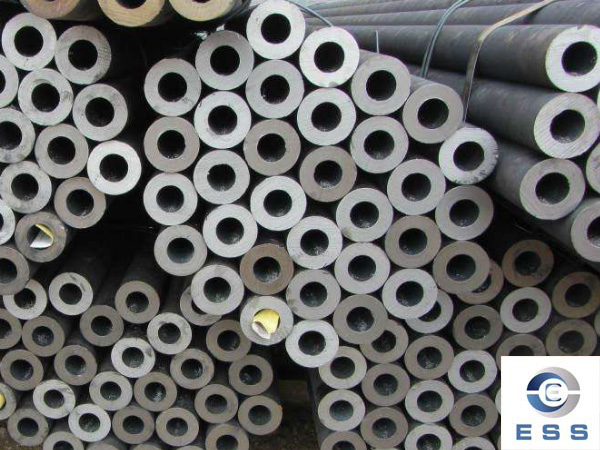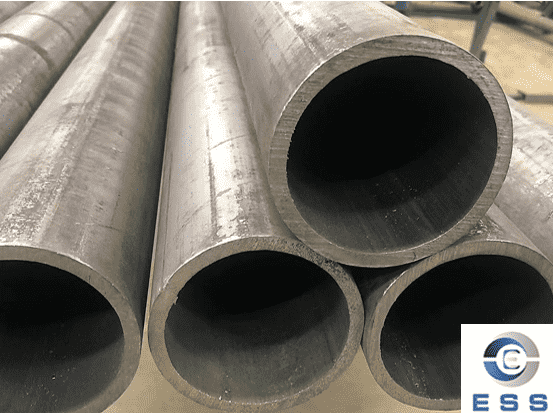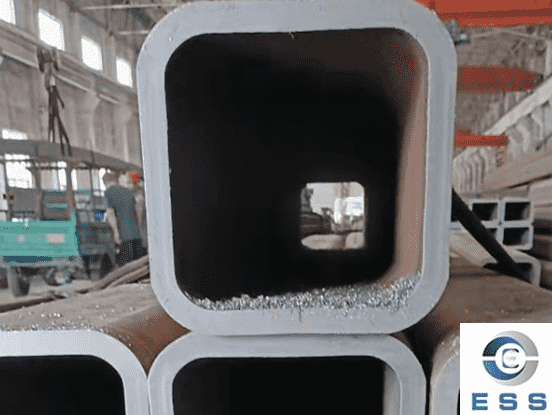Comprehensive knowledge of seamless steel pipes
(1) The wall thickness coverage of seamless steel pipes is relatively wide, and can achieve small diameters and large wall thicknesses and large diameters and large wall thicknesses, but the length is generally limited (only a few manufacturers can produce ultra-long pipes); stainless steel welded pipes The wall thickness can be relatively thin, and the wall thickness of large diameter and small diameter can be achieved. Theoretically, the length of the long roll is as long as the welded pipe can be produced. Generally speaking, the thicker the pipe, the better to choose seamless pipe, the thinner the pipe, the better to choose welded pipe.

(2) In terms of wall thickness uniformity and concentricity, stainless steel welded pipes are better than stainless steel seamless pipes. Because the thickness tolerance of cold-rolled plates is relatively uniform, the deformation during the forming process is even. However, the weld seam protrudes, and different companies and standards have different welding height requirements. Under special circumstances, you can weld first and then cold draw or cold roll; the seamless pipe rolling process is affected by equipment accuracy, material performance and other factors, and there is a thickness difference. There are problems with unevenness and concentricity, but the roundness is better than that of welded pipes.
(3) Function, stainless steel welded pipes have better uniformity and better surface quality. The tube expansion function is better. The performance uniformity of cold-rolled plates is better than that of pipes, and welded pipes generally use online solid solution, which has uniform heat treatment and more stable performance. However, the mid- to low-end stainless steel welded pipes on the market now do not have heat treatment processes, so the quality varies greatly. Stainless steel seamless pipes are sampled from different directions on the same pipe, and their functions are different, and some may be quite different. During the heat treatment of seamless pipes and bundled heat pipes, there is uneven heating and inconsistent cooling rates.
(4) Appropriate in corrosion resistance. The weld has been heat treated and now meets the material requirements. If there is no heat-treated stainless steel welded pipe, the corrosion resistance will be greatly reduced compared with that of stainless steel seamless pipe.
(5) The production cost of welded pipes is lower and more environmentally friendly. A good welded pipe factory can match the environment of an electronics factory; while a seamless pipe factory is full of oil and lubricants, and the pickling environment is even worse.
(6) Being under pressure is different. Under the same specification conditions, stainless steel seamless pipes can withstand higher pressure than welded pipes.
(7) The prices are different. Generally speaking, stainless steel seamless pipes are more expensive than welded pipes. But there are also the following characteristics: if it is a thick-walled pipe, it is suitable to choose seamless pipe, if it is a thin-walled pipe, it is suitable to choose welded pipe.
(8) The delivery time is different. Since stainless steel welded pipes are rolled from stainless steel plates, the processing is relatively simple, so the delivery time is shorter. Stainless steel seamless pipes start from round steel, and then go through multiple passes of cold drawing/cold rolling after perforation, and then undergo solution annealing and pickling to produce finished products. The production cycle is longer.
How to store and manage seamless steel pipes
1) The site or warehouse where steel materials are stored should be located in a clean and well-drained place, away from factories and mines that produce harmful gases or dust. Weeds and all debris should be removed on the site and the steel should be kept clean;
2) They must not be stacked together with acid, alkali, salt, cement and other materials that are corrosive to steel in the warehouse. Different types of steel should be stacked separately to prevent confusion and contact corrosion;
3) Large steel sections, rails, steel plates, large-diameter steel pipes, forgings, etc. can be stacked in the open air;
4) Small and medium-sized steel, wire rods, steel bars, medium-diameter steel pipes, steel wires and steel wire ropes, etc., can be stored in well-ventilated sheds, but they must be covered with thatch;
5) Some small steel products, thin steel plates, steel strips, silicon steel sheets, small diameter or thin-walled steel pipes, various cold-rolled and cold-drawn steel products, and high-priced and corrosive metal products can be stored in the warehouse;
6) The warehouse should be selected based on geographical conditions. Generally, an ordinary closed warehouse is used, that is, a warehouse with a wall on the roof, tight doors and windows, and a ventilation device.
Read more: Seamless Steel Pipe Sizes













 Eastern Steel Manufacturing Co.,Ltd not only improve product production and sales services, but also provide additional value-added services. As long as you need, we can complete your specific needs together.
Eastern Steel Manufacturing Co.,Ltd not only improve product production and sales services, but also provide additional value-added services. As long as you need, we can complete your specific needs together.










